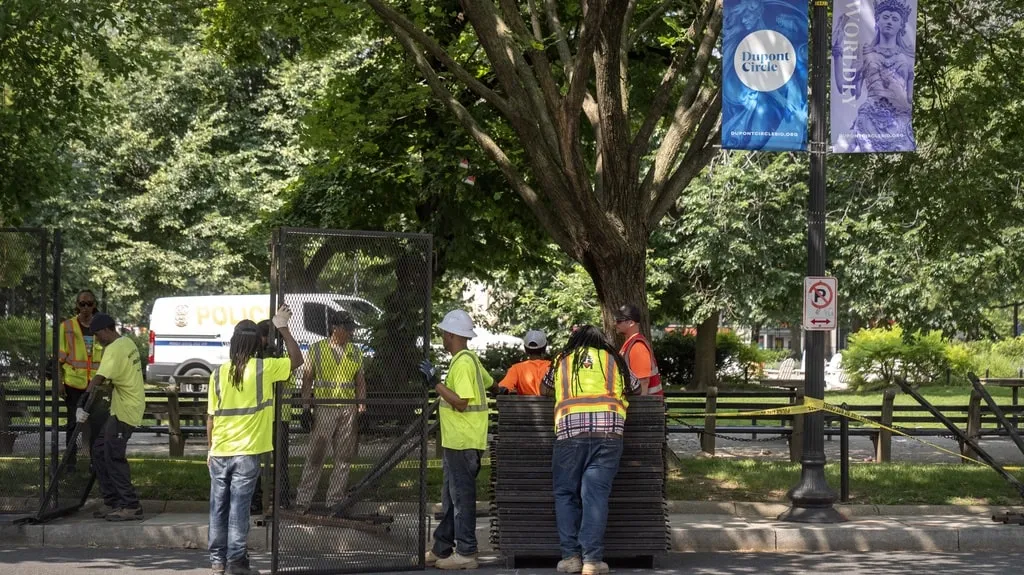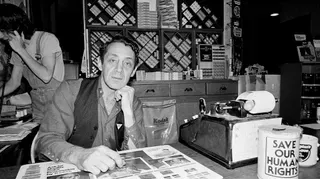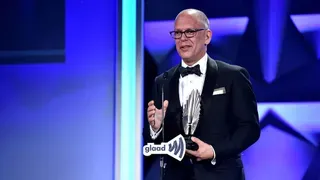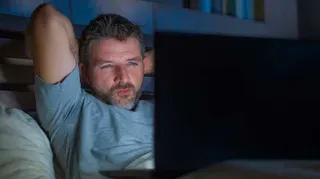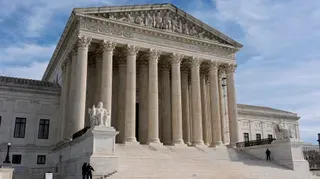September 28, 2013
Impromptu Party Spawned Legendary Dance Fundraiser
Kilian Melloy READ TIME: 6 MIN.
It started with, unsurprisingly, a group of gay guys looking to have a bit more fun a quarter century ago and morphed into a generator of nearly $2 million raised for local LGBT groups and AIDS agencies.
The genesis for the now legendary Real Bad dance party - a private, ticketed event held after the annual Folsom Street Fair - was an impromptu gathering of a circle of friends held after the Castro Street Fair in 1989.
That Sunday night Jim Guequierre and his lover, Jeff Swenton, invited a group of friends back to their place to continue the revelry and served margaritas, which would become a hallmark of the event.
"It was a group of us at the Castro Street Fair looking for something else to do. So we went to a friend's loft to party and dance," recalled David Barbieri, 57, a gay man who lives in San Francisco. "That was how we started it. It just grew year after year."
By 1991 the party had moved to a club space South of Market. That year the group Grass Roots Gay Rights West, modeled after a similar organization on the East Coast, was formed to oversee the dance party and determine how to allocate the proceeds.
By 1995 the group opted to move up the dance party a week sooner to coincide with the Folsom Street Fair, the city's infamous fetish event that attracts revelers from around the globe to San Francisco the last Sunday of September.
"They wanted it to be a men's party. The Castro Street Fair was a younger crowd, it wasn't a leather crowd," said Barbieri, who helped sell tickets to the early dances and recruited others, known as hosts, to also promote the event and recruit their friends to attend. "It became the hottest party of the weekend, with the best looking guys and the best music."
This Sunday night, September 29, will mark the 25th anniversary of the queer dance party. To mark the occasion, organizers created a 12-minute video documenting the event's history and contributions to the local LGBT community as part of a small, corner exhibit that opened in August at the GLBT History Museum in the Castro.
"There is so much history involved with Real Bad. A lot of people don't realize how it started and the evolution of it," said Matthew Johnson, 39, who worked on the short film.
When Real Bad organizers initially approached the GLBT Historical Society about doing an oral history project, the gay archival group based in San Francisco responded with an offer to mount an exhibit detailing the history of the party at its museum space.
Paul Boneberg, the society's executive director, told the B.A.R. that the organization felt the idea of using social events to raise money for LGBT agencies was worth a closer look.
"There is a larger story to tell of raising money to do good. It is a story that needs to be understood about how important this is," said Boneberg. "Our culture includes our parties. Before there were gay organizations there were gay bars and gay parties."
The exhibit notes that the LGBT community has a long tradition of hosting parties that double as fundraisers, such as the dance-a-thon benefits used to raise money during the early days of the AIDS epidemic.
"With a do-it-yourself ethos, LGBT fundraising fueled activism and built care networks into enduring organizations," reads the exhibit introduction.
Among the items on display is a letter from 1993 signed by pop star Madonna, urging the recipient, James Beales, to attend that year's AIDS dance-a-thon to be held at Fort Mason.
"Someday we'll dance to celebrate the cure. I hope it's in this life," wrote Madonna.
Titled "Be Bad ... Do Good: Activism with a Beat," the exhibit notes that Real Bad, with the tagline "a party with a purpose," has raised $1.7 million to date and has awarded donations to nearly 50 local nonprofits over the years, all overseen by a group of dedicated volunteers.
"We are the longest running nonprofit organization raising money that is a dance party," said Gina Gatta, who helped curate the exhibit and has been on the GRGR/West board of directors for four years.
Gatta publishes the Damron gay travel guides, which has sponsored Real Bad the last dozen years, and has attended the dance parties since 1992. The museum exhibit spawned from the board's desire to have a legacy project to celebrate its silver anniversary, she said.
To help it reach the $2 million mark in donations, the board this year is trying to raise an additional $100,000 on top of the $200,000 it normally raises. It will not know if it has succeeded until the night of its beneficiary party November 7.
"It looks very good. We are close to hitting our $100,000 goal," Gatta said this week.
Each year a large and small beneficiary agency is selected by the dance organizers for a two-year grant cycle, so four local nonprofits annually share the proceeds.
This year the board decided to also grant four, one-time $10,000 grants, two to local agencies and two to national groups.
Tickets Hard to Come By
Part of the party's enduring appeal is its unique way of selling tickets to the dance. Each year 250 people are selected to be a Real Bad host, which requires them to pay $50 plus purchase a $125 VIP ticket to the event. They also commit to selling two VIP tickets and six general entrance tickets, which this year cost $90.
Hosts are given the option to renew their participation each year, and if there are any spots open they are parceled off by lottery to those on a waiting list.
"This year we had 10 new hosts. It was the first time in three years we had a vacancy," said Gatta.
In the video Jeff Stallings, who was a co-chair of Real Bad III, recalled the idea for the hosts came about as a way to help pay for moving the dance to a commercial venue.
"We had zero money," said Stallings in the film.
Back then it was a struggle to find people to commit to be hosts, but nowadays, it can be a herculean task to find a Real Bad ticket to purchase. GRGR/West lists on its website each year the names of the hosts, many of whom live outside the Bay Area, and this year, as far away as New Zealand and Canada.
But it does not include their contact information, so finding a host can be a maddening experience for newcomers or those not in the know.
"It is always frustrating because the tickets are so hard to get," said Scott Saraceno, a 20-year resident of San Francisco who attended his first Real Bad in 1999. "In the early years it took a lot of phone calls to find hosts."
Visiting the city seven years ago from Oklahoma, Johnson happened to be working out at a Castro gym when he was offered a Real Bad ticket.
"On the airplane home I was crying because I was leaving. A year later I was living here," said Johnson, who has worked on the visual effects for blockbuster movies like The Hunger Games and the Percy Jackson films.
Saraceno also worked on the short documentary. Asked why the party has lasted through the years, he pointed to its high production values achieved on a very low budget since most of the money raised is donated away.
"It has remained a quintessential San Francisco event that is run by people in the city with a great purpose," said Saraceno, who two years ago volunteered on the set-up crew for the dance. "It really epitomizes the whole Folsom Street aesthetic. It's the party I look the most forward to every year."
The event's success has its drawbacks, said Barbieri, known for his elaborate fruit table displays he erects each year at the dance.
"We never thought it would get as big as it is today. Personally, I don't like how big it is," said Barbieri, who marveled at the fact that a small house party has evolved into "a worldwide-known party now."
Up to 2,000 tickets are sold each year in advance of the party, held for the last 15 years at dance club 1015 Folsom. Another 50 are set aside at the door and sold on a first-come basis and are gone within minutes of the doors opening.
"Now people fight to get tickets," noted Barbieri.
Gatta offered one secret to those trying to score a ticket: check with the doorman if more tickets are available as throughout the course of the night hosts who did not sell all their tickets will turn them over.
"We try to sell another 300 at the door," she said.
To see the documentary short "Real Bad: History and Legacy" online, visit www.realbad.org/videos.
Tickets are available for Real Bad's companion dance party Recovery following this year's Castro Street Fair, Sunday, October 6. It will be held from 6 to midnight at Public Works, 161 Erie Street off Mission Street.
Tickets are $30 in advance, $40 at the door. The proceeds will be earmarked toward the 25th anniversary fundraising campaign.
The GLBT History Museum is hosting a panel discussion about the Real Bad exhibit from 7 to 9 p.m. Thursday, October 17 at the museum at 4127 18th Street in San Francisco.
General admission is $5; $3 for California students; and free for GLBT Historical Society members.
Kilian Melloy serves as EDGE Media Network's Associate Arts Editor and Staff Contributor. His professional memberships include the National Lesbian & Gay Journalists Association, the Boston Online Film Critics Association, The Gay and Lesbian Entertainment Critics Association, and the Boston Theater Critics Association's Elliot Norton Awards Committee.
